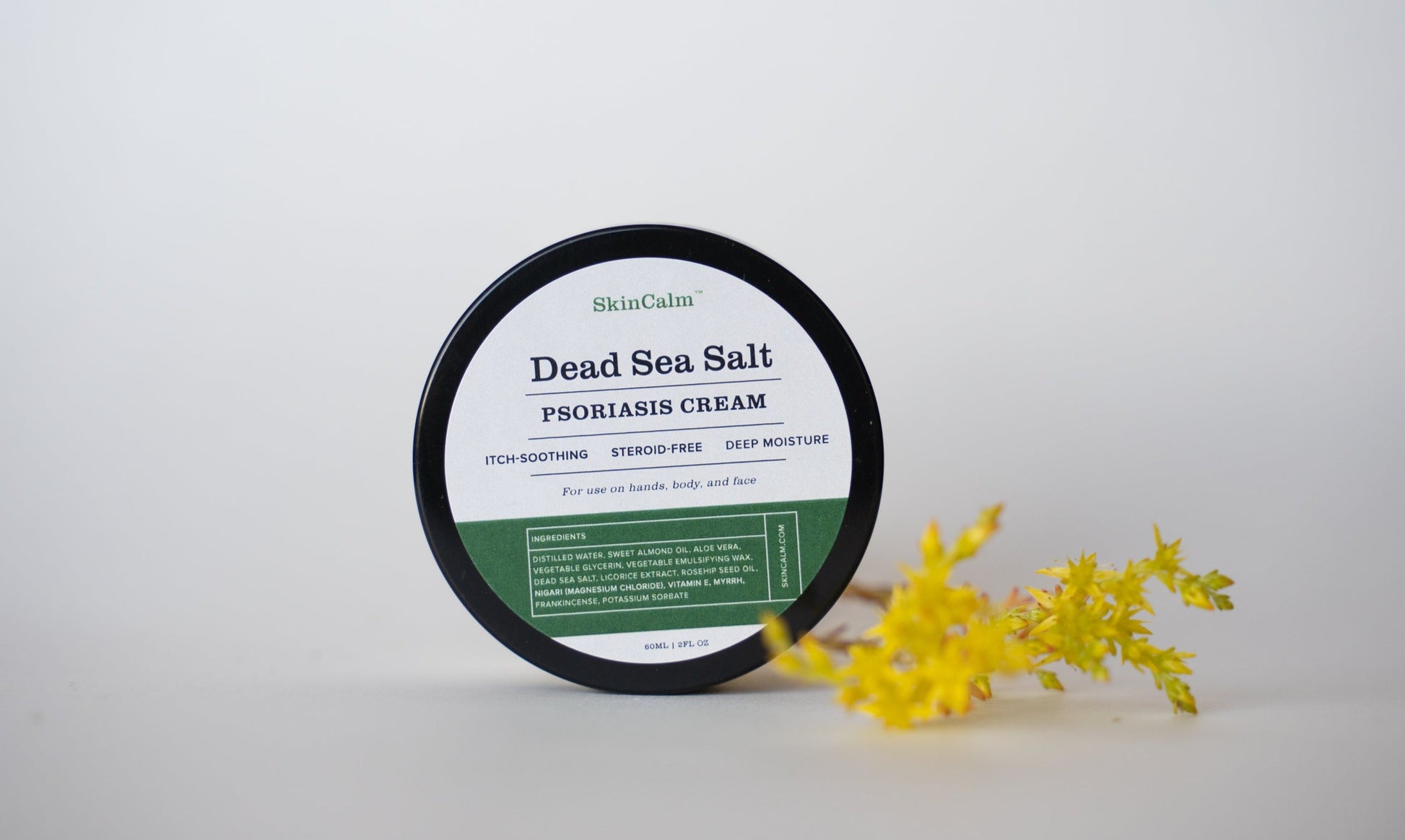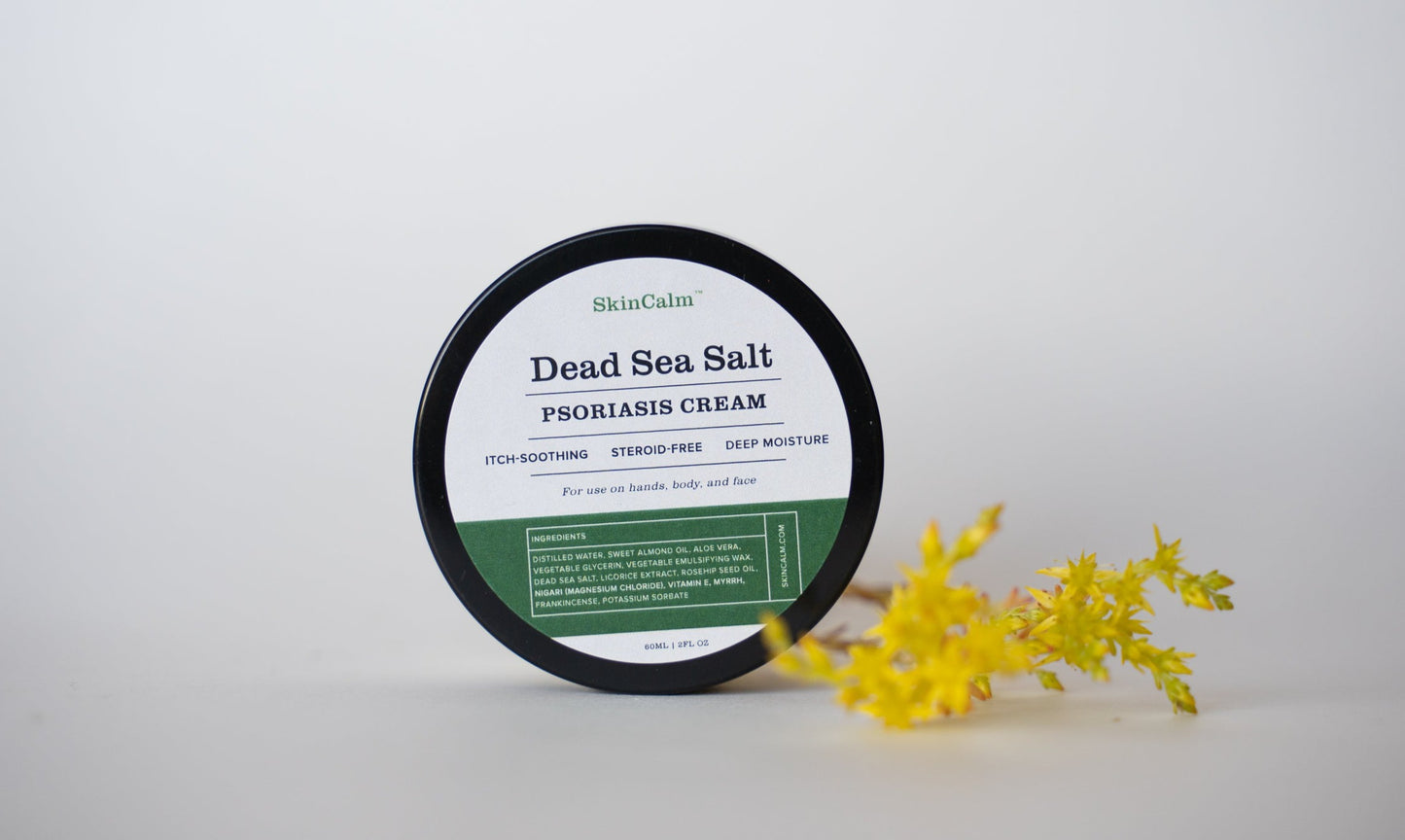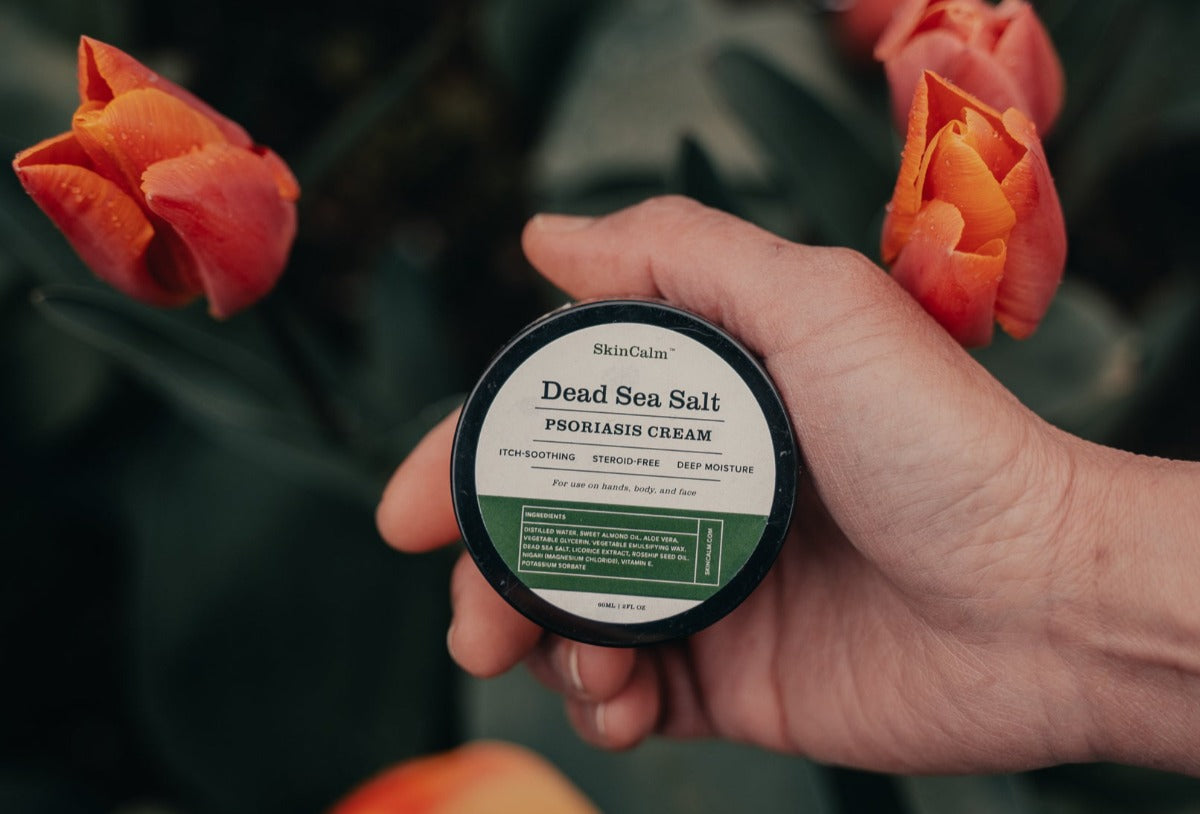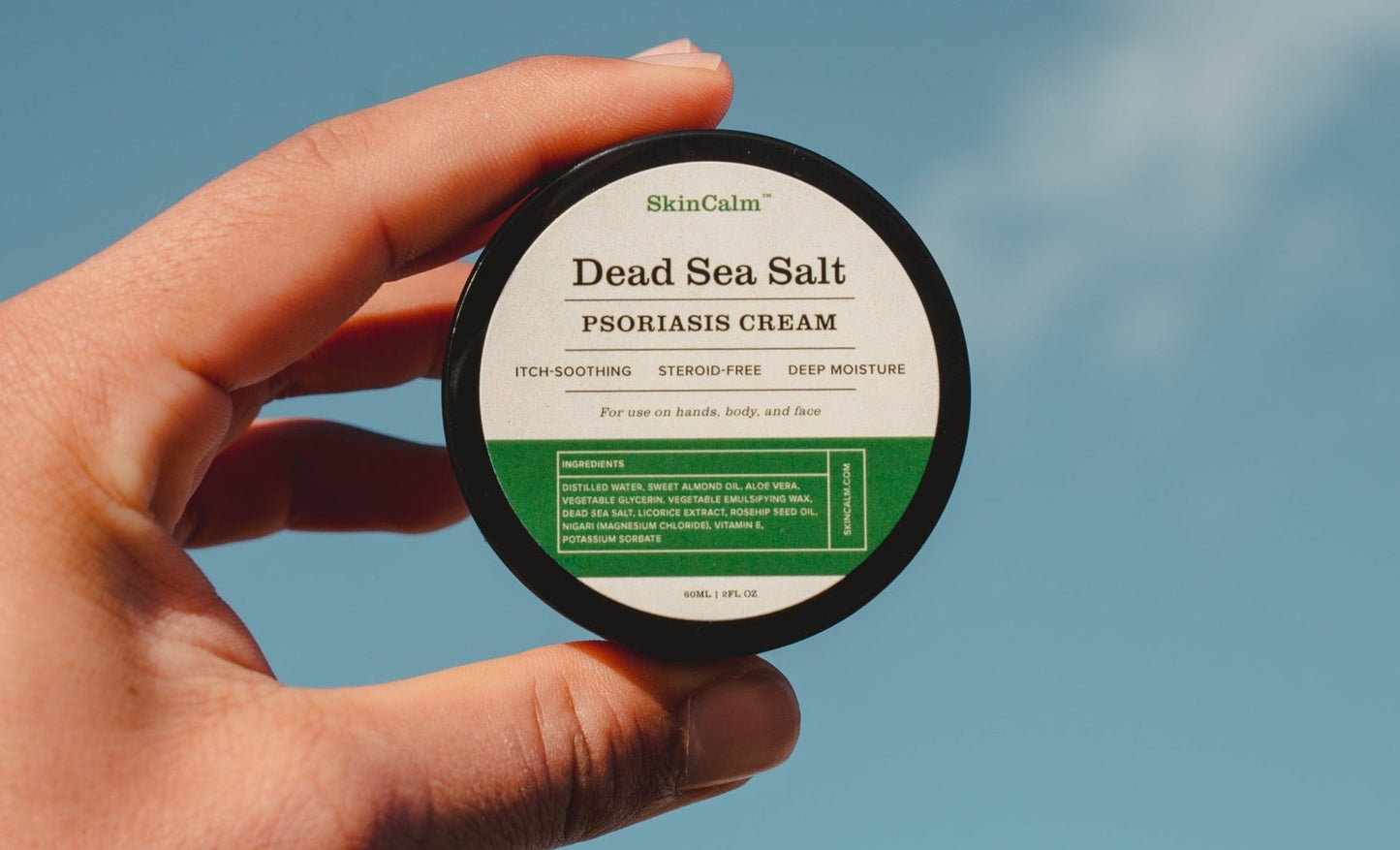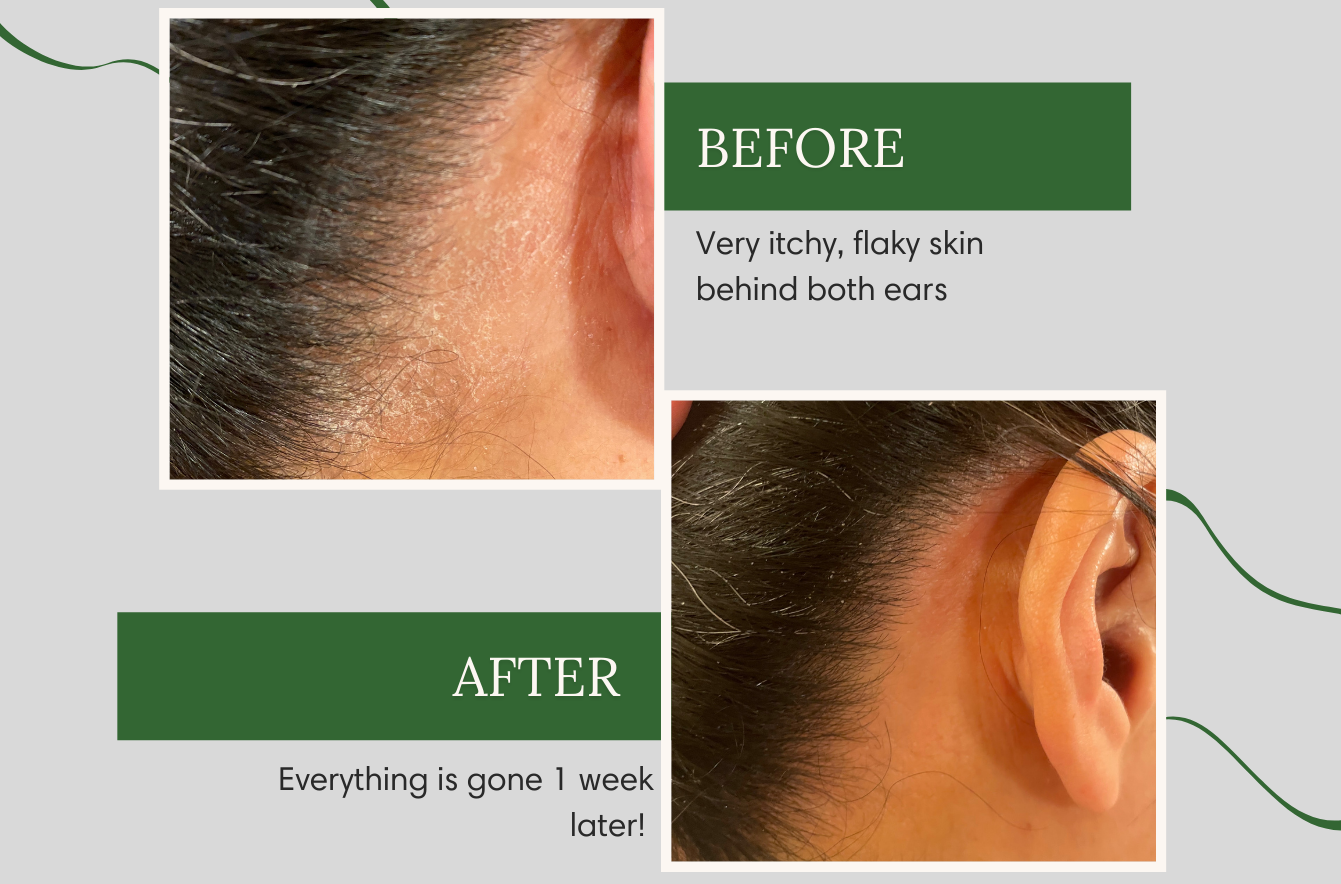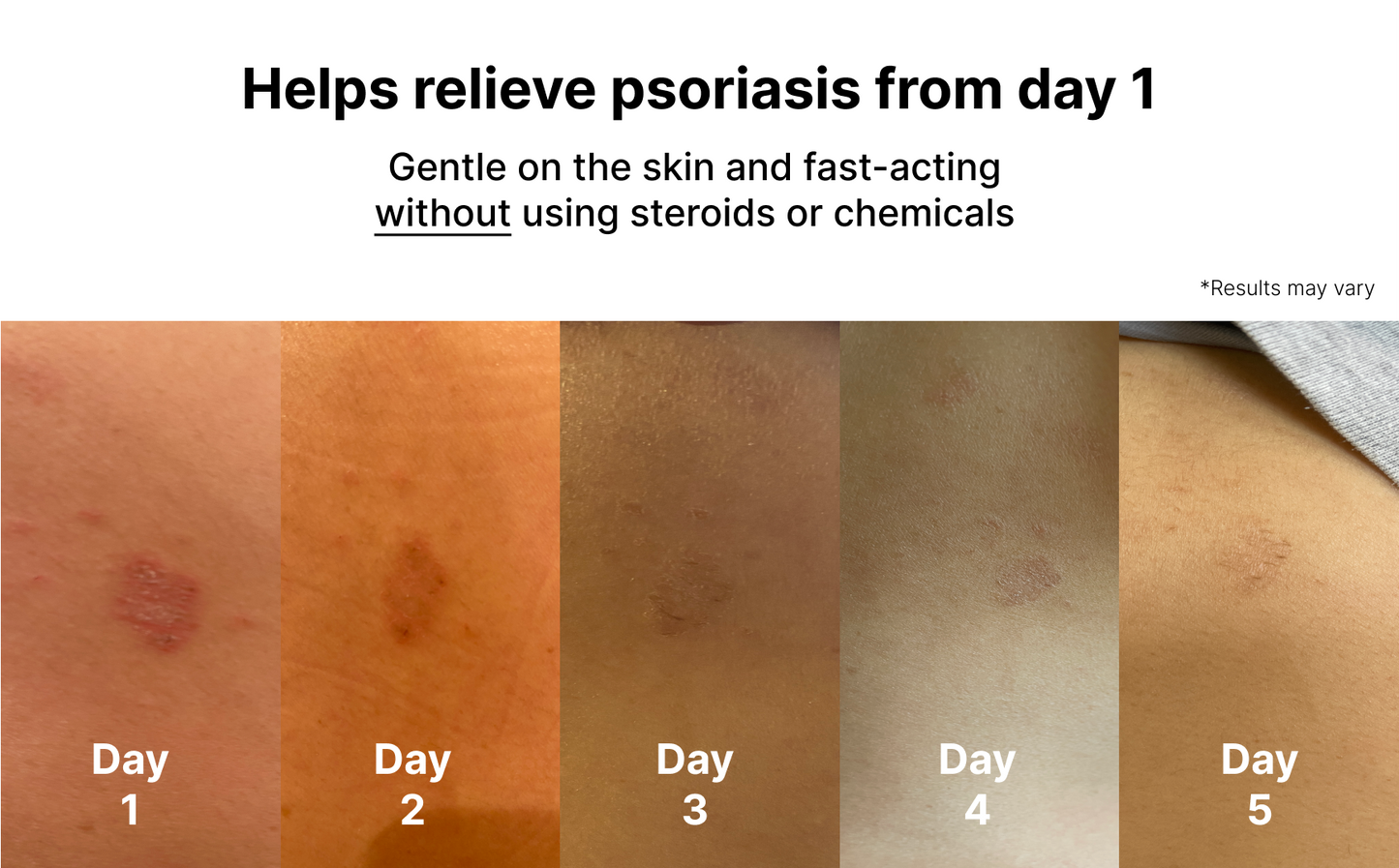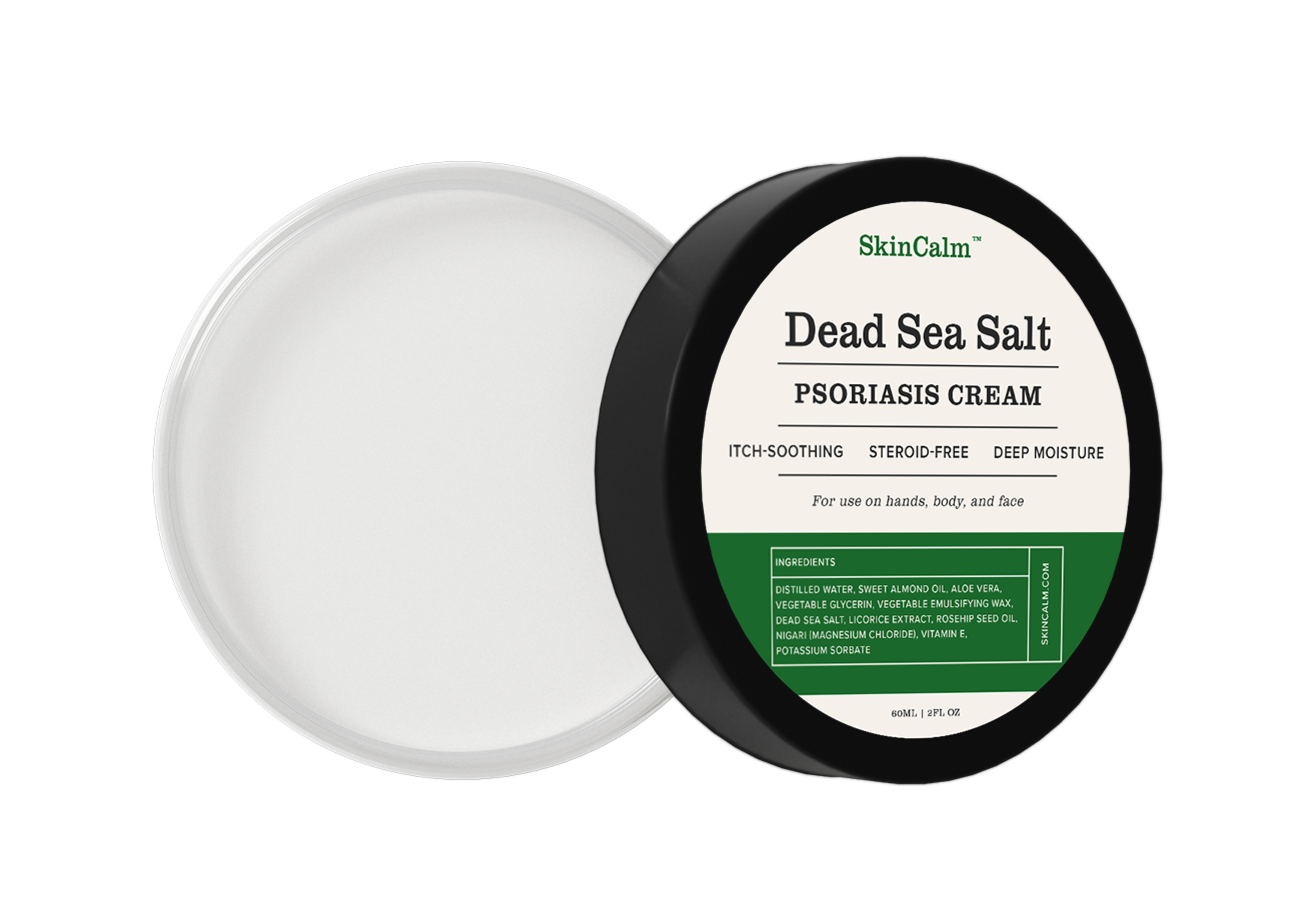If you're reading this article, chances are good you've got psoriasis.
And, chances are also good that you're intimately familiar with the itchy, red, and dry patches that show up seeming at random, or if you look at the sky the wrong way.
It can be very frustrating because you may not want to use steroids (whether because of past experience or just because you don't want to), or are simply tired of steroid rebounds.
But, you may be in luck.
Dead Sea Salt therapy is known to be one of the most effective ways to help calm your skin quickly, effectively, and in a way that has lasting effects.
If you're still figuring out psoriasis, we'll be publishing an article on what psoriasis actually is, the types, and common symptoms.
This article is focused on 3 ways to use Dead Sea Salt for your psoriasis that actually work. It comes from decades of research, experimentation, and a healthy dose of real-world experience. (Method three is our favorite!)
A quick recap of Dead Sea Salt and Psoriasis
Just to recap, Dead Sea Salt is - you guessed it - salt from the Dead Sea in Israel, famous for its very high salt concentration and ability to help you float and get touristy pictures.
What most people don't realize is that it's also a hyper-effective ingredient for treating psoriasis and other skin conditions.
Dead Sea Salt has a bunch of minerals in it, including magnesium, calcium, sulfur, zinc, and potassium. People have been using Dead Sea Salt Therapy to treat psoriasis for centuries because it's really good at reducing inflammation while also helping your skin absorb nutrients it may otherwise be shedding.
It may seem like there are a dozen ways to use Dead Sea Salt for your psoriasis, but in reality, there's only about 3 ways to use it effectively - so here they are.

Go floating
The first is to literally go to the Dead Sea and soak in it - exactly like all of the tourist pictures you see. This allows you to absorb all of the minerals and goodness in person.
In fact, this is such a common thing that spas nearby offer psoriasis and eczema treatments as an option, and are very professional about it. After all, people with skin conditions have come to the Dead Sea for thousands of years to seek its treatment!
The best time to visit is early fall, early summer, or mid-spring when the weather is warm but not scaldingly hot.
Take a bath
While travelling to the Dead Sea regularly is undoubtedly going to do wonders for your skin, it also comes with the downsides of A) you have to go to Israel and b) you're gonna have to find somebody responsible to feed your goldfish while you're gone (looking at you, John!).
In all seriousness, if you can afford the expense and time, go for it. Try it and see what happens. But, when you don't have an extra trust fund or two lying around to make monthly trips to the Dead Sea, the obvious solution is to bring the Dead Sea to you…via a bath.
Personally, I like to get big bags of Dead Sea Salt and bathe in it a couple of times a week for 20 mins or so. The optimal ratio is usually 1.5 cups/bath depending on your tub size.
It's incredibly soothing, and your skin should start feeling better within weeks. Do make sure you get proper Dead Sea Salt though - oftentimes, Amazon sellers will slap a "Dead Sea" label on a bag of salt and try to get your money. This isn't going to work at all, and also happens to be very uncool.
Personally, I like to get salt from these guys in San Francisco because they’re transparent about the quality of their products, and it works really well.
Creams
Sometimes, though, you just want something you can put on. The convenience of being able to apply to a specific “flare point” throughout the day can’t be understated.
Oftentimes, it can also be more effective than soaking, too, because you're able to apply concentrated doses at a much more frequent interval.
Creams are how you do that.
If you can get a cream or ointment that has high concentrations of Dead Sea salt (like ours), you can be much more specific about when and how you apply it.
Personally, I like to change the usage depending on the time of day. For example, I will throw on a light coat after waking up and add little touch-ups throughout the day, while lathering it on before bed. I've also found that putting on a healthy dose before going under the sun helps tremendously. I even go so far as putting on a thick coat on my scalp before sleeping (which you can rinse off in the morning)!
Whatever you do though, make sure you start small. While the healing qualities make it tempting to go heavy, Dead Sea salt can sting at the beginning for some. Start small, and build it up over time to see the best results. And, while you may see some peeling on the location after using it for a while, this is totally normal for all Dead Sea Salt Therapies, and you’re very likely to see nice and healthy skin emerging from underneath.
Now, you may venture making these creams yourself, but it can be very labor intensive, expensive, and it's actually quite tricky to not end up with a gooey, runny mess. However...
*in my best TV announcer voice*
We've got the solution!
If you are looking for an easy and gentle, yet effective way to use Dead Sea Salt for your psoriasis, our cream is your answer. We've quite literally gone through hundreds of different formulas (542 to be exact) to come up with one that's non-oily, has high concentrations of high-quality Dead Sea Salt, and is filled with other natural remedies to make your skin happy.
Not for nothing, but every member of our team uses it for their own psoriasis, and thousands more around the world swear by it.
As a little bonus, if you share this article on social media and tag us (@skincalm_official on Instagram or @skincalm on Facebook), we'll personally send you a coupon to get 15% off your entire order... so share away!
Thanks for reading, and we hope this has helped.
If you have any questions or comments, feel free to leave them below or reach out to us directly. We love hearing from our community!



